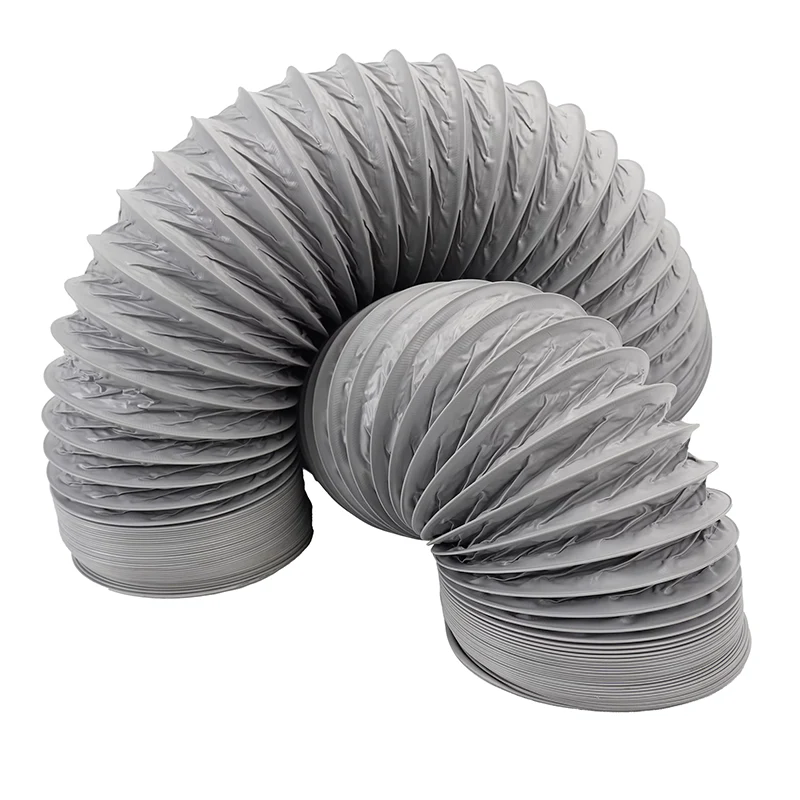PVC Air Duct: The Modern Solution for Efficient Ventilation Systems
2025-04-01
When it comes to designing and maintaining efficient ventilation systems, the choice of materials plays a critical role. One material that has gained significant popularity in recent years is PVC (Polyvinyl Chloride). Used extensively in various industries, PVC is now a preferred option for air ducts, providing an effective and cost-efficient solution for residential, commercial, and industrial HVAC systems. In this blog, we’ll explore the benefits of PVC air ducts, their applications, and why they are an ideal choice for modern ventilation needs.
What are PVC Air Ducts?
PVC air ducts are ventilation systems made from Polyvinyl Chloride, a synthetic plastic polymer. PVC is known for its durability, flexibility, and ease of use, making it an excellent material for air ducts. These ducts are typically used to transport air efficiently in HVAC systems, ensuring proper airflow and maintaining air quality in indoor environments.
Unlike traditional metal ducts, PVC air ducts are lightweight, corrosion-resistant, and easy to install. They offer a wide range of benefits that make them a preferred choice for new constructions and renovation projects alike.
Benefits of PVC Air Ducts
There are several advantages to using PVC air ducts, which contribute to their growing popularity in the HVAC industry. Let’s take a look at some of the key benefits:
1. Durability and Longevity
One of the main reasons why PVC air ducts are preferred is their durability. PVC is resistant to corrosion, rust, and most chemicals, which makes it an ideal choice for environments with high humidity or exposure to corrosive substances. Unlike metal ducts, PVC does not degrade over time when exposed to moisture, making it an excellent long-term solution. These ducts can last for many years without requiring extensive maintenance or repairs.
2. Lightweight and Easy to Handle
PVC is a lightweight material, which makes it much easier to handle, transport, and install compared to traditional metal ducts. The ease of installation not only reduces labor costs but also speeds up the overall installation process. Whether you’re dealing with a small residential project or a large commercial system, the lightweight nature of PVC makes it a versatile option for various applications.
3. Resistance to Mold and Mildew
Because PVC is a non-porous material, it is naturally resistant to mold and mildew growth. In areas where humidity and moisture levels are high, such as bathrooms, kitchens, or basements, PVC air ducts provide a clean and healthy airflow by preventing the buildup of mold and mildew. This resistance helps maintain better indoor air quality and reduces the likelihood of air contamination.
4. Energy Efficiency
PVC air ducts are known for their energy-efficient properties. The smooth interior surface of PVC ducts ensures that air flows freely with minimal friction, reducing the amount of energy required to circulate air throughout the system. This translates to better energy efficiency, lower utility bills, and a more environmentally friendly ventilation solution. In addition, the lightweight nature of PVC allows for more streamlined ductwork, reducing the overall load on the HVAC system.
5. Noise Reduction
Another significant benefit of PVC air ducts is their ability to reduce noise. The smooth and solid construction of PVC ducts helps minimize vibration and noise caused by air movement within the system. This is especially valuable in settings such as offices, hospitals, and residential homes where noise control is essential for comfort and productivity. With PVC ducts, you can enjoy a quieter environment without compromising air circulation.
6. Cost-Effective
PVC air ducts are generally more affordable than their metal counterparts, making them a cost-effective solution for both residential and commercial installations. The low material cost, combined with the reduced labor expenses due to easy installation, makes PVC air ducts an attractive option for those looking to save money without sacrificing quality or performance.
7. Eco-Friendly
PVC is a highly recyclable material, which makes PVC air ducts an environmentally friendly choice. By choosing PVC for your ductwork, you are opting for a material that has minimal environmental impact, especially in terms of energy consumption during production and its recyclability at the end of its lifespan.
Applications of PVC Air Ducts
PVC air ducts are suitable for a wide range of applications across different sectors. Below are some of the most common uses for PVC air ducts:
1. Residential Ventilation Systems
In homes, PVC air ducts are ideal for heating, ventilation, and air conditioning (HVAC) systems. Their lightweight construction and easy installation make them perfect for residential ductwork, especially in newer homes where energy efficiency is a priority. PVC air ducts are used for both return and supply air systems, ensuring optimal airflow and indoor air quality throughout the house.
2. Commercial Buildings
In commercial buildings, PVC air ducts are frequently used for office buildings, retail stores, and restaurants. Their resistance to corrosion and mold growth makes them a smart choice for environments where cleanliness is paramount, and humidity levels can fluctuate. The noise-reducing qualities of PVC are particularly important in office settings where a quiet work environment is essential.
3. Industrial Applications
PVC air ducts are also used in various industrial applications, including manufacturing facilities, warehouses, and laboratories. Their durability, resistance to chemicals, and ability to withstand harsh conditions make them a great fit for industrial environments where metal ducts may corrode or deteriorate more quickly.
4. Hospitals and Healthcare Facilities
Hospitals and healthcare facilities rely on efficient, clean, and hygienic ventilation systems to maintain a sterile environment. PVC air ducts are ideal in these settings because they prevent the growth of bacteria, mold, and other contaminants. Furthermore, the smooth interior surface of PVC ducts prevents dirt accumulation, ensuring that the air remains clean and the HVAC system operates efficiently.
Conclusion
PVC air ducts are transforming the HVAC industry by offering an efficient, durable, and cost-effective solution for modern ventilation needs. Their lightweight construction, resistance to mold and corrosion, energy efficiency, and eco-friendly properties make them an ideal choice for a wide variety of applications, from residential homes to large industrial facilities. As the demand for better indoor air quality and more sustainable building practices continues to rise, PVC air ducts will play an increasingly important role in shaping the future of ventilation systems. Whether you’re building a new home, upgrading an existing system, or designing a commercial space, PVC air ducts are a smart and practical solution to meet your needs.



